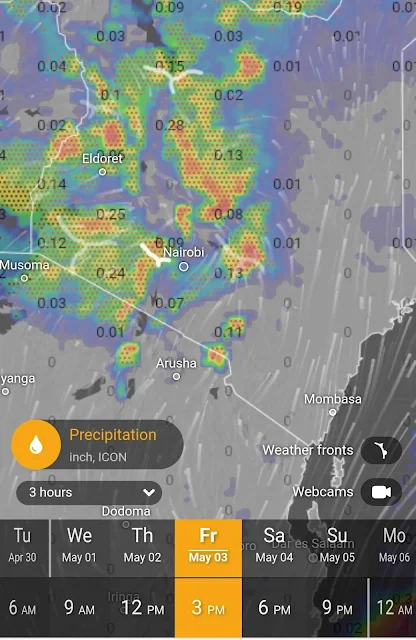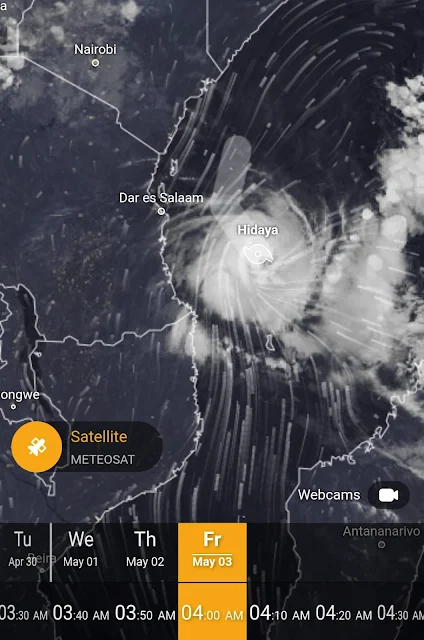Tropical Cyclone Hidaya is generating winds that may reach speeds of up to 165 km per hour.
Very strong southerly winds will push it northward, despite its westward movement towards the Tanzanian coast. As it moves northward, it will experience a rapid loss of propulsion due to the Coriolis force acting at the equator.
By the time Saturday morning arrives, it will be in ruins.Nairobi, central Kenya, and Kenya's heartland will all be on the receiving end of the unexpected effects that this will bring about.
After the Nyika plateau, the southerly winds blowing away at cyclone Hidaya will move westward and feed the stationary low-pressure system that has been in action for the past two weeks.
There is a high probability that the intensity of rainfall in Nairobi, central Kenya, and even the north-eastern region of Kenya will significantly rise. Some of the most windward highland regions of Mount Kenya and Aberdares may see rainfall of more than 200 millimetres. The all-time record for the 24-hour period at the Kangaita forest station is 634mm.
There is a good chance that tropical storm Hidaya will bring warm, humid air and jets of air from an ocean that is exceptionally warm right into the highlands of Kenya.
Particularly today, metereologists anticipate heavy rainfall from regions as far south as Makueni and Kajiado, as far east as Meru and Kitui, as far north-east as Mandera, and as far north as Turkana and Marsabit.
"We anticipate significant flooding from these rains. Today and tomorrow morning, we anticipate the strongest rains of the season to fall on the area."
Today at three o'clock, rain may wash away bridges and block off highways; therefore, we strongly advise against making any unnecessary trips.
That which is good and that which is terrible will eventually come to an end. Even this intense downpour will eventually stop.
The satellite picture depicts tropical cyclone Hidaya as a massive concentration of thunderstorms with a circulation that spans a thousand kilometers.



Post a Comment
What is your say on this